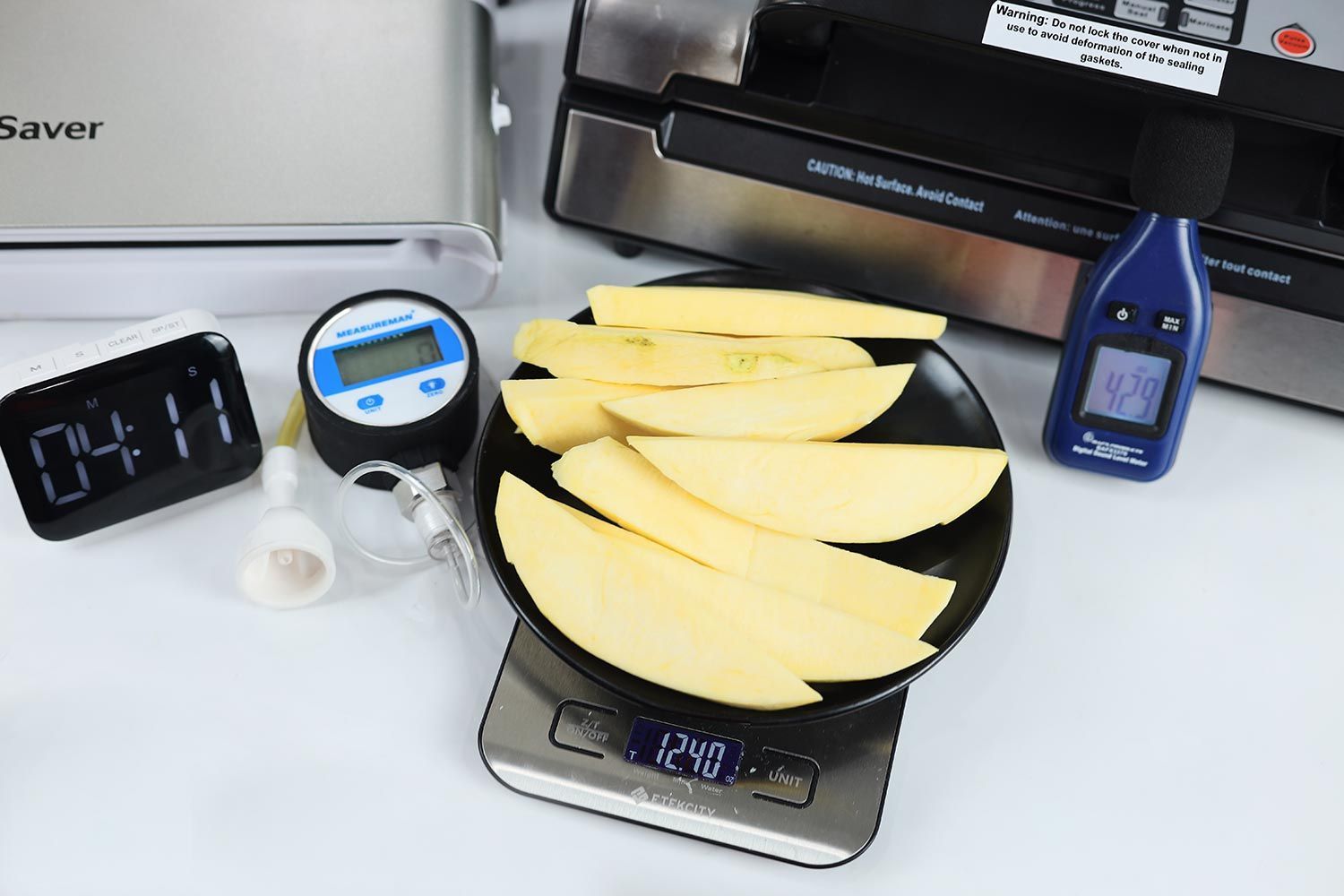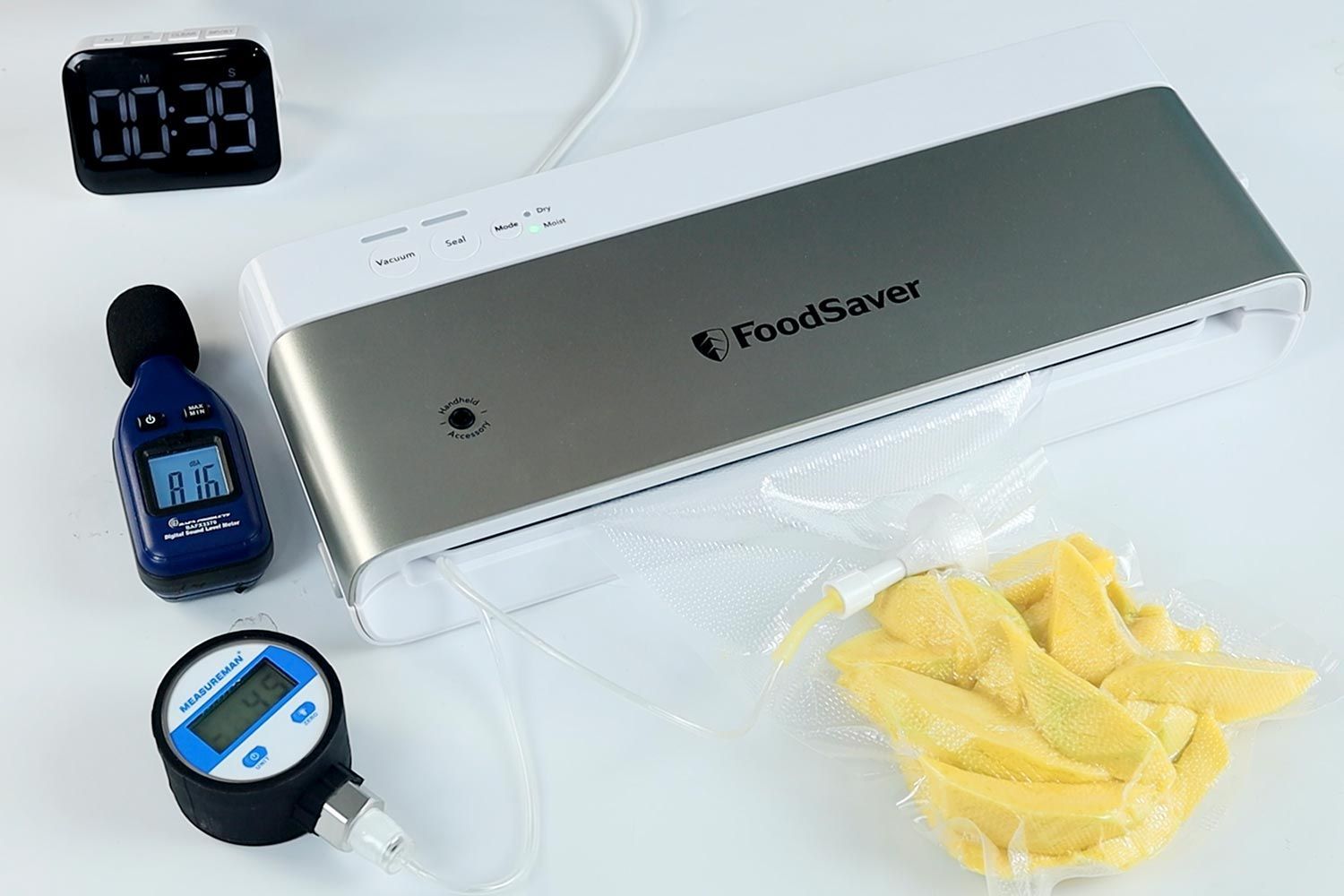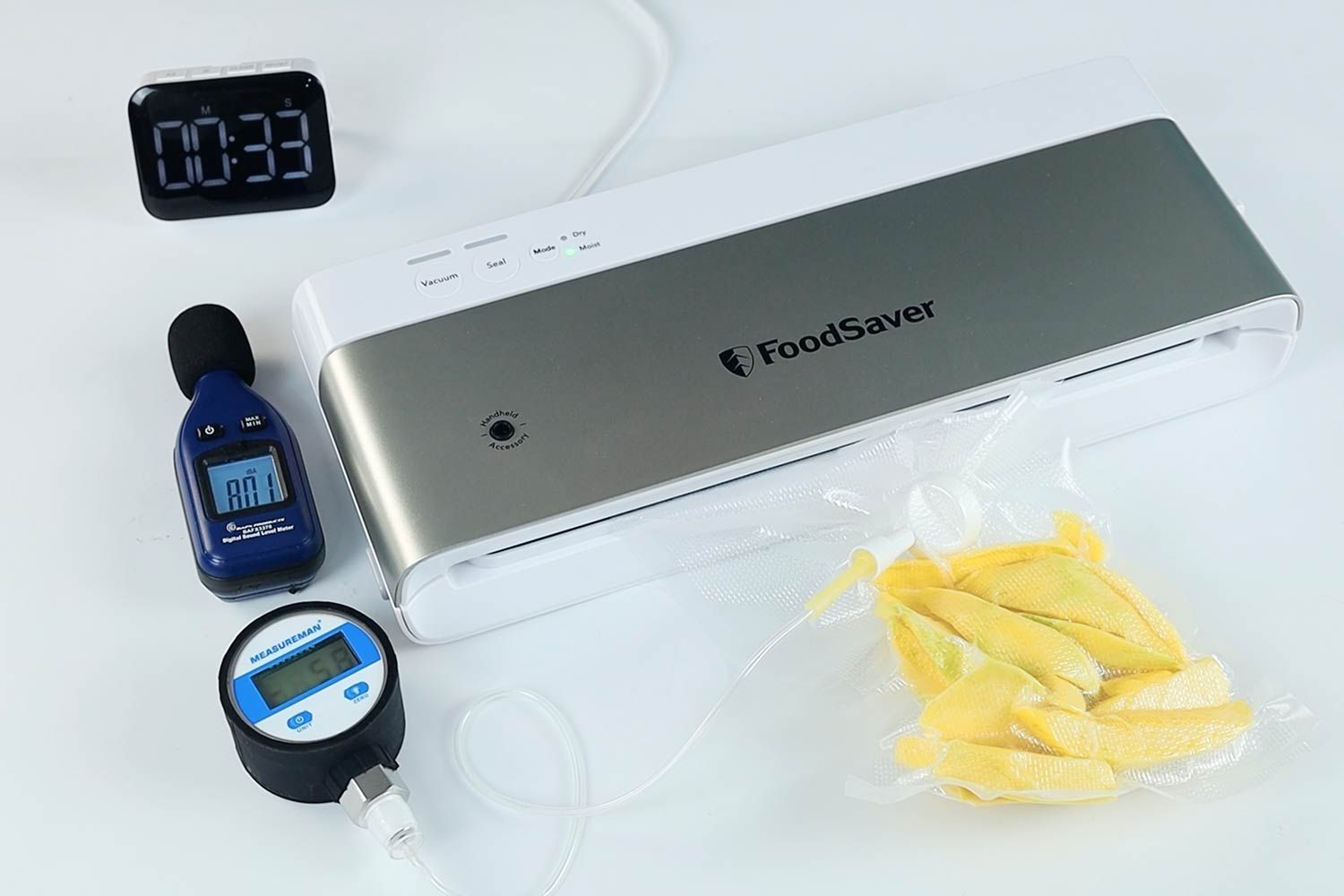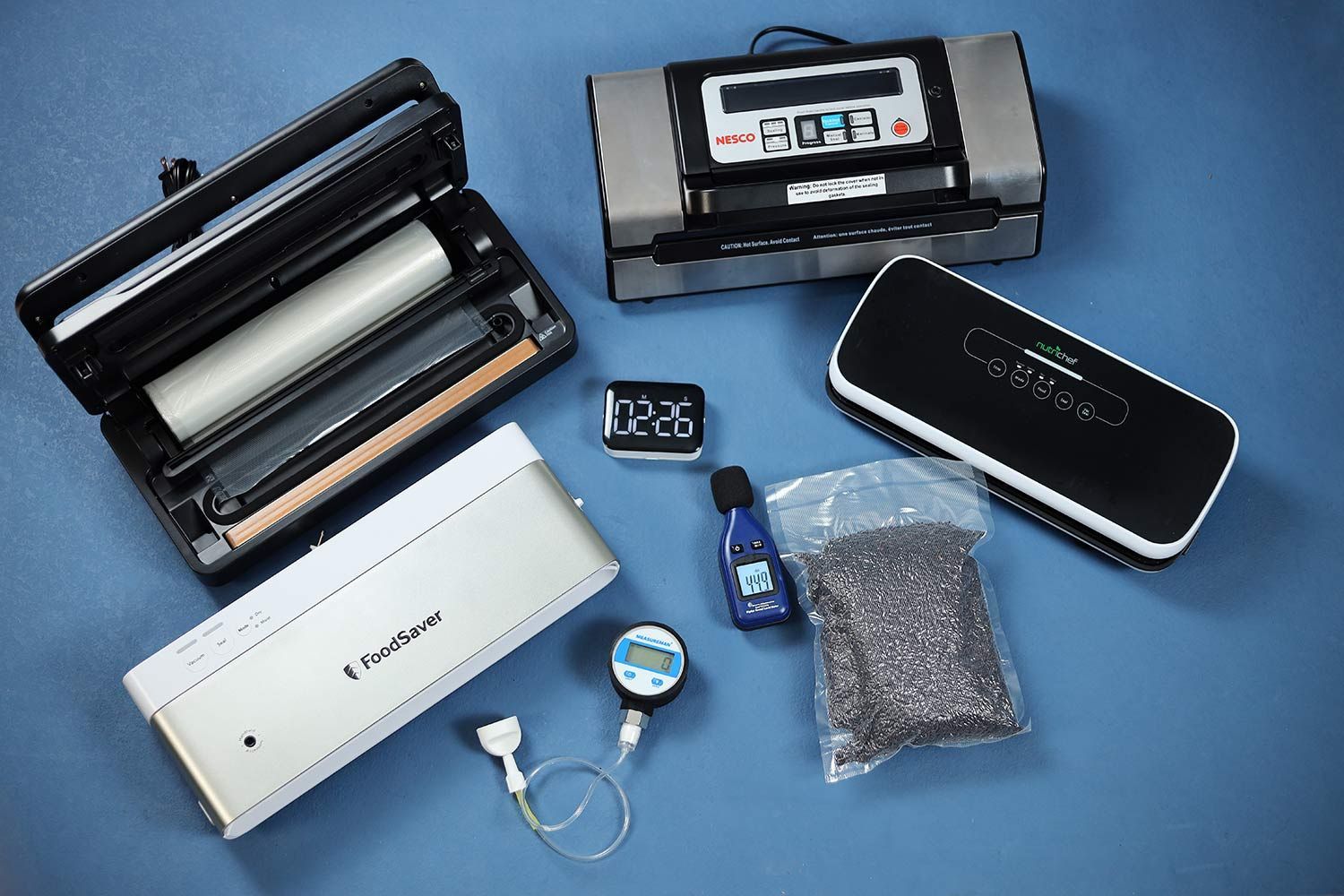Our recommendations are made independently. We may receive commissions from purchases made via our links.
Moist Food for Vacuum Sealers
To find the best vacuum sealer around, we use several top-performing sealers to package 12.4 oz of fresh mango slices in this moist food test.
This test is part of How Shouldit Tests Vacuum Sealers v1.0

High-moisture foods like fruit slices have a short fridge life, typically a few days, according to the USDA. By vacuum-sealing the food, which removes the air around it, extends freshness significantly.
To find the best vacuum sealer, we tested various models, focusing on fresh mango slices. While moist foods need less suction power for a complete vacuum compared to dry foods like rice, the key remains effective air evacuation and fast operation.
Testing Procedure

We’ll fill a bag with 12.4 ounces (about 350 grams) of fresh mango slices, vacuum it, and seal it. The bag will be connected via an air hose with a vacuum pressure gauge, which measures the pressure in kPA. A timer is placed next to the sealer to count the time it takes for the sealer to finish a working session.
As part of our quality control process, we perform two tests for each model to ensure the data we collect is accurate and reliable.
The lower the pressure reading (in negative kPA,) the more air that has been removed from the bag. The time indicates how quickly the vacuum sealer can evacuate the air and seal the bag. Faster times are better for efficiency.
Scoring Metrics
The total score that the sealer gets in the moist food test is the sum of two sub-scores — suction strength (60%) and cycle time (40%.)
As mentioned earlier, since we perform two separate test sessions to ensure accuracy and reliability, the sub-score you'll see in our review, which contributes to the overall performance score, is an average of data from these two tests and is not derived from a single test.


Resulting in a total score of 7.9/10.
Suction Strength
Suction strength is measured by the vacuum pressure gauge in kPA.
- Above 50 kPA - 10 points
- 45-50 kPA - 9 points
- 40-44 kPA - 8 points
- 35-39 kPA - 7 points
- 30-34 kPA - 6 points
- 25-29 kPA - 5 points
- 20-24 kPA - 4 points
- 15-19 kPA - 3 points
- 10-14 kPA - 2 points
- 5-9 kPA - 1 point
- Below 5 kPA - 0 point
Cycle Time
Cycle time is measured by the timer that starts from when the sealer’s vacuum activates to when it turns off and the bag is sealed.
- Under 15 seconds - 10 points
- 15-19 seconds - 9 points
- 20-24 seconds - 8 points
- 25-29 seconds - 7 points
- 30-34 seconds - 6 points
- 35-39 seconds - 5 points
- Above 40 seconds - 0 point
References
https://ask.usda.gov/s/article/How-long-can-you-store-fruits-and-vegetables - How long can you store fruits and vegetables? - USDA
